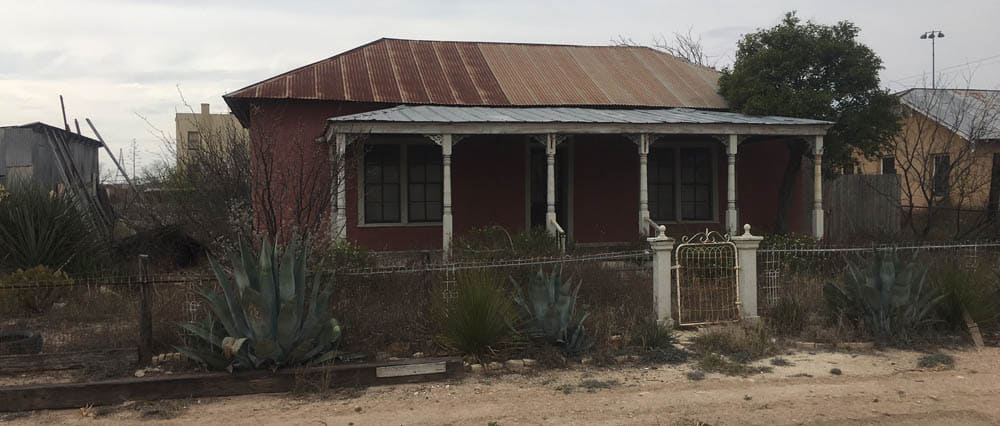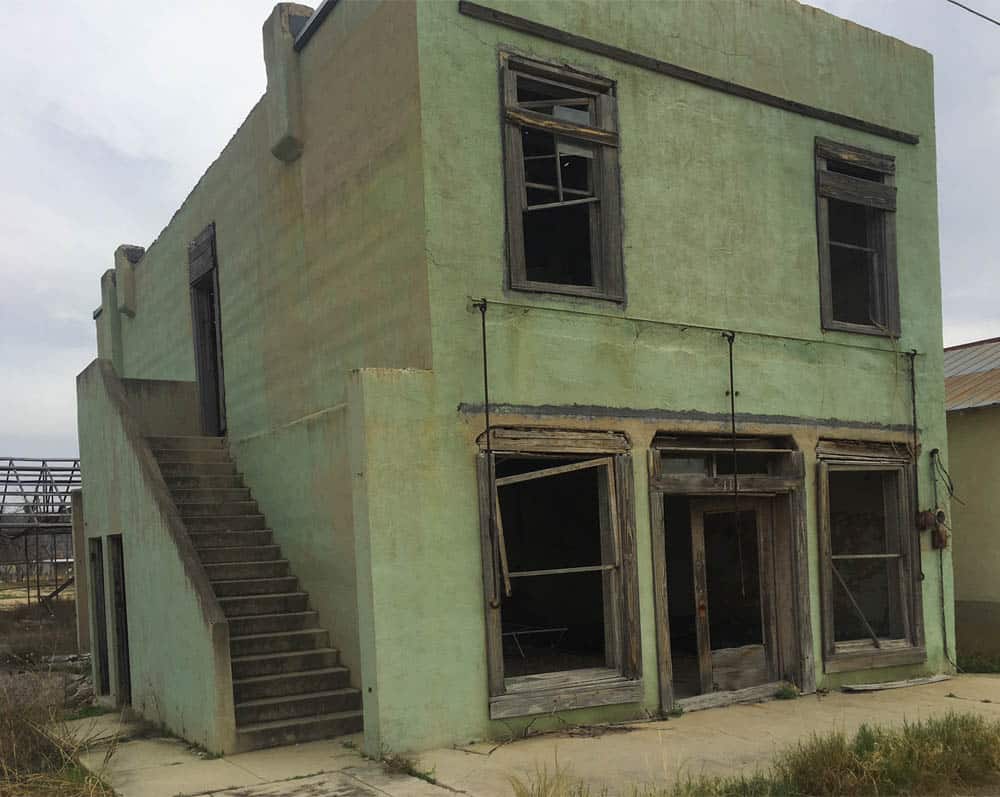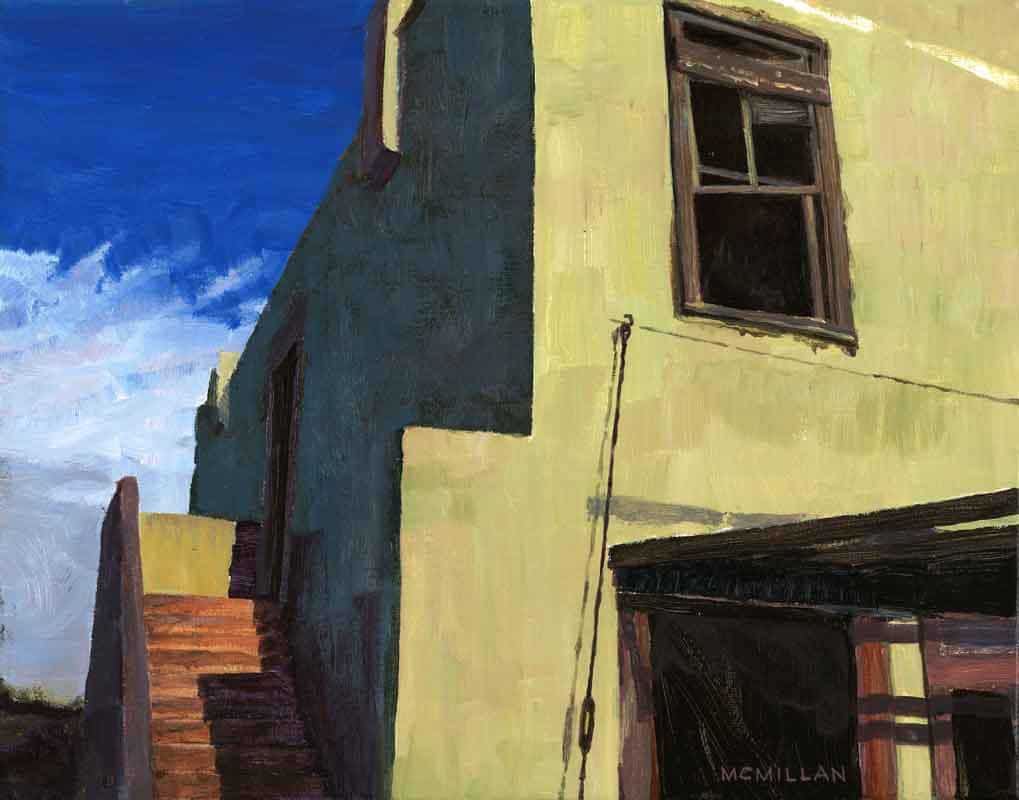The day ended a bit over 100 miles from where it began and with no survey measurements to show for it. The plan had been to stop off briefly at the office of a colleague to see what some very old records he had in his custody revealed about some surveys that were made about ninety years ago. There was a chance that they might illuminate one particular question that research of the public records had raised. In the event, it was the dusty work of four hours to page through fossilized field books and Dead Sea scrolls of maps just to satisfy myself that the answer was very well buried if it existed in them at all, which was an answer in itself of sorts.
So I got to Sanderson, the county seat and only town in Terrell County, Texas, at the edge of the Big Bend, with enough time to go to the County Clerk's Office and buy copies of a couple of instruments that I needed, but not much else. The County Clerk of Terrell County, Martha Allen, is excellent. Her records are well organized and her staff are professional, which is quite an accomplishment given the sad state of disrepair that Sanderson itself continues to slide toward.
I monitor that slippage by (a) the number of businesses, particularly restaurants, that have disappeared since my last visit and (b) the condition of various crumbling buildings. I'm not sure exactly why the house in the photo below has what appears to be some minor cosmetic paint, but I'd guess there's a realtor involved. The bones of the house are nice enough. It's an adobe built around 1900 (my guess) during Sanderson's heyday, when there was a roundhouse and maintenance shop on the line of the Southern Pacific railroad that passed through town. The house was high enough that it escaped the flood that washed through Sanderson Canyon in 1965, destroying most of the older buildings near the railroad, including the roundhouse.
Then there are the buildings that were damaged by the flood and never were put back together, such as this shapely wreck that at one time had doctor's offices upstairs and some retail store down. It continues to crumble from visit to visit
My point of reference for it was how it looked about ten years ago,before the awning in front finally gave up the ghost and before the paint was dry on this canvas.
Places like Sanderson are probably fertile for the seed of an artist's community. There will be others like Georgia O'keefe, Gerald Cassidy or Gustave Baumann. Look what they did for that sleepy little pueblo called Santa Fe. Too bad it's located in such an inhospitable part of the globe....;)
paden cash, post: 417721, member: 20 wrote: Places like Sanderson are probably fertile for the seed of an artist's community. There will be others like Georgia O'keefe, Gerald Cassidy or Gustave Baumann. Look what they did for that sleepy little pueblo called Santa Fe. Too bad it's located in such an inhospitable part of the globe....
Sanderson would have made an arts colony if it only had a better stock of old buildings. The flood of 1965 washed that possiblity away. The reason Marfa does actually have an arts community is that when Donald Judd arrived there in the 1970s, there were all sorts of buildings that could be bought very cheaply and he did. Of course it doesn't hurt a bit that Marfa has got landscape surrounding it that provides a grand backdrop for ruins and is about 2000 ft. higher in elevation than Sanderson, which makes for a high desert climate.
Over the years my brother and have always taken a fishing sabbatical in the Rockies and found some very interesting places. Back in the late '70s and early '80s we use to camp in some backroad places like Creede and Tincup, CO. We always talked about buying into some of those places but never did. If we had I wouldn't be surveying now...
paden cash, post: 417723, member: 20 wrote: Over the years my brother and have always taken a fishing sabbatical in the Rockies and found some very interesting places. Back in the late '70s and early '80s we use to camp in some backroad places like Creede and Tincup, CO. We always talked about buying into some of those places but never did. If we had I wouldn't be surveying now...
Isn't it too dark to be surveying in Oklahoma now? BTW, about twenty years ago you could have bought houses in Marfa for under $20k that would sell for about $300k now.
Incidentally, as I'm sure we all know, probably the critical part of surveyors' records is the finding aid that will allow someone unfamiliar with the records to locate data relevant to some future object of research. The solution that one Texas surveyor, Robert S. Dod, used was to glue an index to the cover of his field books. It's better than nothing, but I don't recommend it. This is one of his field books from about 1919 or so. Mr. Dod did not evidently think that dating his field book entries was important. Practice tip: date field book entries.
Kent McMillan, post: 417738, member: 3 wrote: Incidentally, as I'm sure we all know, probably the critical part of surveyors' records is the finding aid that will allow someone unfamiliar with the records to locate data relevant to some future object of research. The solution that one Texas surveyor, Robert S. Dod, used was to glue an index to the cover of his field books. It's better than nothing, but I don't recommend it. This is one of his field books from about 1919 or so. Mr. Dod did not evidently think that dating his field book entries was important. Practice tip: date field book entries.
Are the entries chronological?
paden cash, post: 417740, member: 20 wrote: Are the entries chronological?
It's a bound field book, so they'd pretty much have to be in order of time. I can put dates on some of the work from field notes, reports and maps he filed.







